Whether you surf or not, we can all agree that surfing has this universal appeal of being “cool,” so you can imagine my curiosity when I first started my job at Tracy A. Stone Architect and saw a sign for Grain Surfboards on our building.
“What’s up with the massive surfboard collection in an architecture office?” is a frequent question at Tracy A. Stone Architect.
Allen Anderson was introduced to me as our IT specialist, but I couldn’t help but think, why are Tracy and the IT man so flirty? Do they always make dinner plans like this? Turns out they’re life partners. When Allen isn’t busy helping us with IT issues, he’s overseeing Grain Surfboards West Coast operations.
Growing up in Hawaii
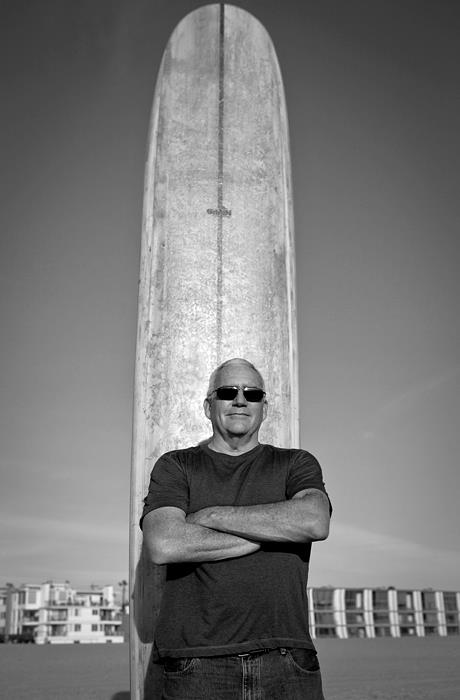
Surfing was important in the Anderson family. Allen says around the age of six he can remember his dad taking him out for a surf. While most children would be terrified of the ocean swallowing them, Allen says the excitement only fueled his enthusiasm. From his earliest days, Allen can remember living next to the Royal Hawaiian Hotel, often climbing the fence and seawall to jump straight into the Waikiki surf.
“I was lying on the board with my father, but he had to paddle for me because I was too small to even reach the water. Dad stood up and the next thing you know, I went under and all I could see was white.”
Fast forward to today, Allen is co-owner of Grain Surfboards, a wooden surfboard company leading the way in sustainable boards and helping surfers reconnect with their roots. As surfing has grown over the years, the industry has relied heavily on hazardous chemicals and machines to shape and finish thousands of boards for mass markets. Since the 1950s, a vast majority of boards have been made with three main ingredients: a foam core covered in fiberglass cloth and cured with resin. It’s simple enough, but the materials and chemicals released during manufacturing are an environmental nightmare. Lately, there has been a push from consumers to have more environmentally-conscious ways to build modern surfboards, which is where Grain comes into play.
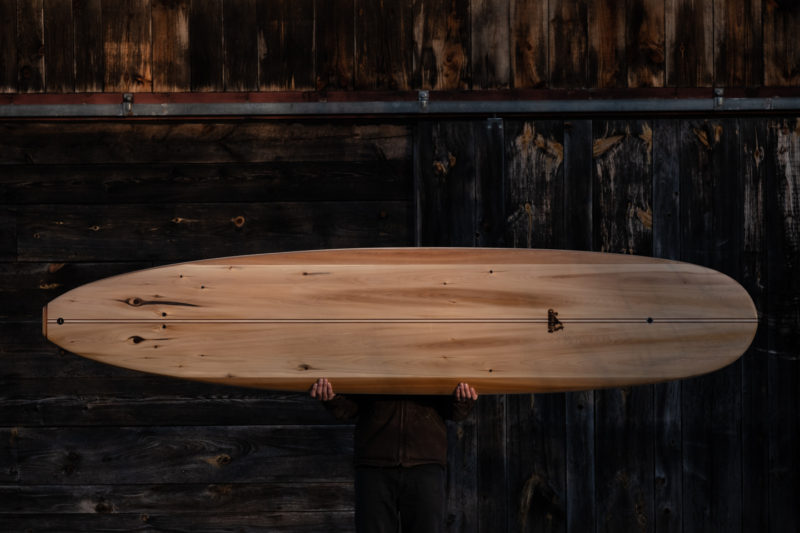
Beautiful, Hand-shaped Wooden Surfboards
The first thing that strikes you about Grain’s surfboards is how beautiful they are. Hand-shaped from local sustainable softwoods and glassed with an epoxy made from tree sap, the boards inherently bridge that connection between humans and nature. Allen originally stumbled upon Grain 10 years ago when he was searching for a wooden surfboard as a memorial for his grandfather. Liking Grain’s methodology, he decided to take one of their board-building workshops. The workshop left a lasting impression on him, which ultimately led him to pitch his idea of hosting workshops in California. The workshop looked something like this: six surfers, from all different backgrounds, crafting their own surfboards in a 5000 square foot barn in the middle of York, Maine. It’s a scene of tired hands and excitement.
“You rub your hands down the rails of this board, your hands are exhausted, but you realize you can surf this thing in a week,” says Allen about his experience, remembering how he would get goosebumps thinking about it.
Besides building the board itself, one of Allen’s favorite experiences was meeting other like-minded people during the process. I joked that the boards last long, but the friendships made along the way last longer.
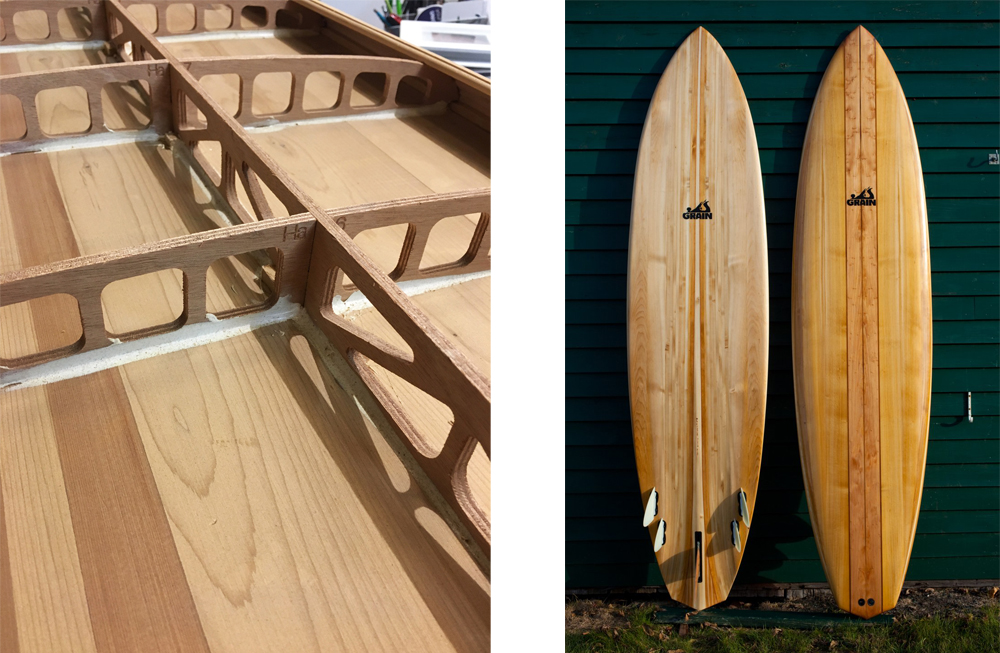
Build Your Own Surfboard in a SoCal Workshop
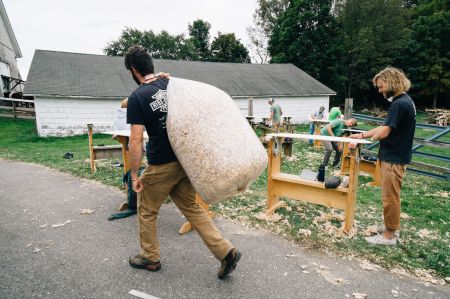
As co-owner and Grain’s West Coast manager, Allen is helping to organize board workshops and show Southern California the appeal of wooden surfboards. Most of the workshops take place in Maine or New York, but for the West Coast, Grain offers their traveling workshops. If you find yourself in California, keep an eye out for Grain’s revamped school bus, packed full of surfboards and supplies, stopping to give workshops up and down the coast. If building a board in the comfort of your own home is more your style, Grain also offers Grain HomeGrown Kits, a DIY experience of building your own board.
From four-day classes, DIY kits, and traveling workshops, Grain has something for everyone. The result is Grain paving the way in sustainable surfboard design, while creating a product that has a soul and tells a story.
To learn more about Grain Surfboards, check out the Grain Surfboards website.

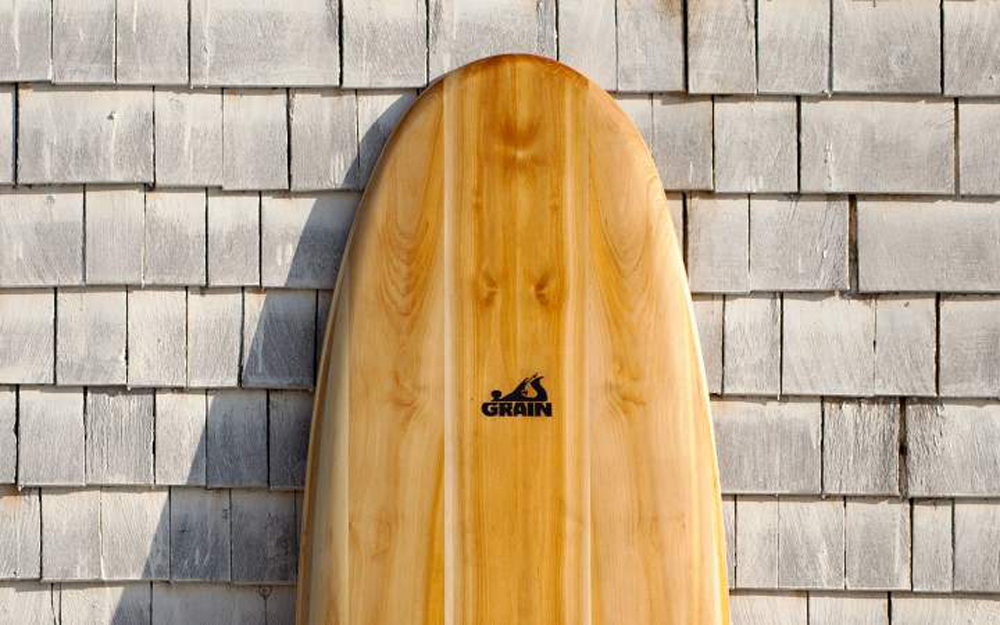
That is awesome!!!